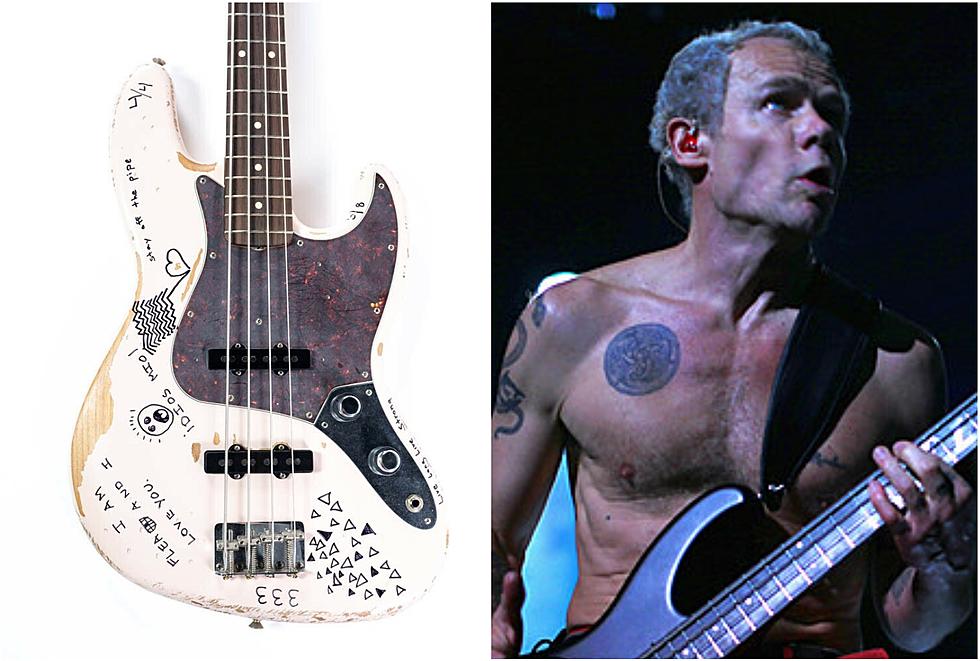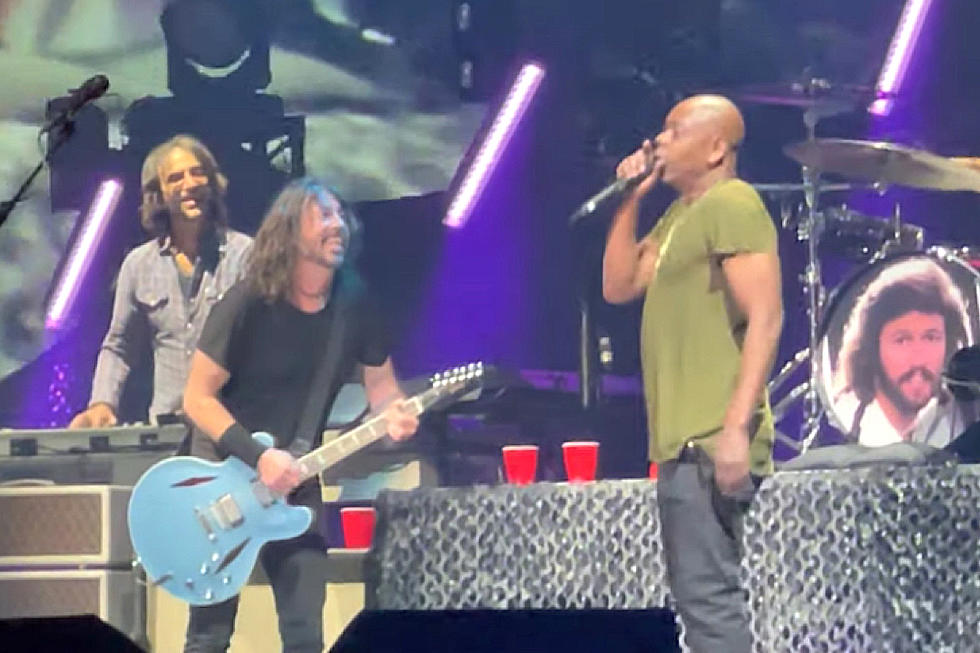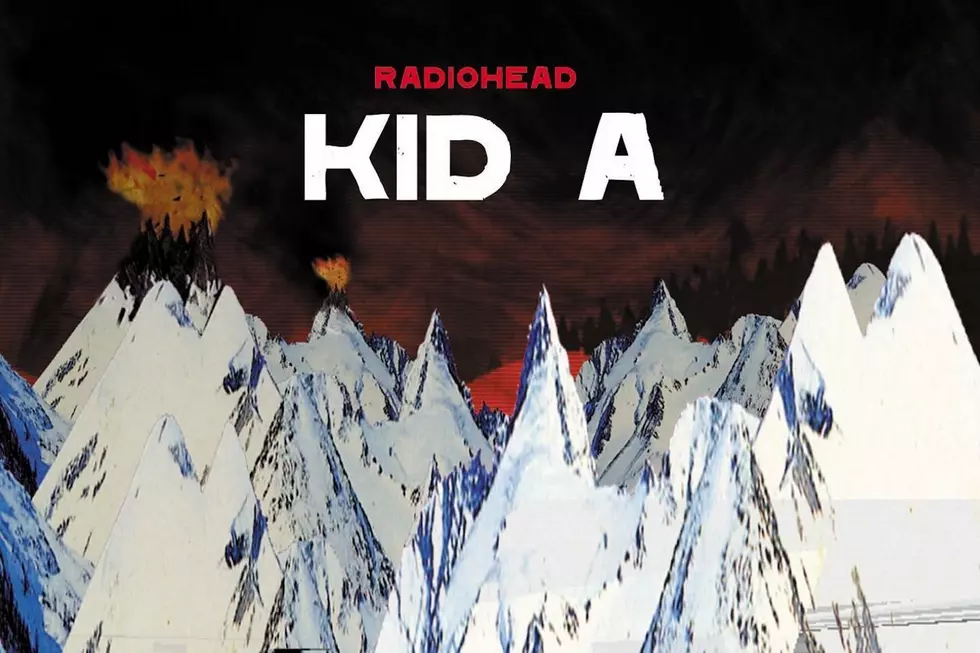
When Radiohead Imitated Their Heroes on ‘Pablo Honey’
A band that would earn a reputation as one of the brainiest, most fiercely creative acts of a generation named their first album after a Jerky Boys reference. In 1993, Radiohead released their debut full-length Pablo Honey, its title inspired by a prank call from one of the Boys’ infamous comedy CDs.
Their sophomoric sense of humor might have been a holdover from their high school days, when the alt-rock quintet had begun. Thom Yorke, Jonny Greenwood, Ed O’Brien, Colin Greenwood and Phil Selway formed a group called On a Friday in 1985, when all were students at Abingdon School in Oxfordshire, England. Rather miraculously, the guys maintained contact even after they graduated, attended university and returned to Oxford.
Upon signing a record contract with EMI in 1991, the band was encouraged to change their name, switching to Radiohead (after a Talking Heads song of the same name). Having built up more than a little material over the past six-to-seven years, the newly rechristened group released a four-track EP of demos, Drill, in the spring of 1992. After Radiohead’s first release didn’t attract attention, the band sought producers who might better capture the sound they were hoping for.
As fans of records by the Pixies and Dinosaur Jr., the group secured producers who had worked with each of those bands: Sean Slade and Paul Q. Kolderie. Although the band members were thrilled to collaborate with the same people who had helmed albums by their heroes, the close association with the distorted guitars of Dinosaur Jr. and the loud-quiet-loud dynamics of the Pixies (Radiohead even copied the look of Surfer Rosa with the single cover of “Stop Whispering”) would later be seen as a weakness of their debut album. Even the guys in the band thought so.
“Heaven forbid anyone should judge us on Pablo Honey,” O’Brien said years later. “We were in hock to Dinosaur Jr. and the Pixies up to our eyeballs.”
Yet it was a different influence that resulted in the eureka moment during the early stages of recording Radiohead’s first album in the summer and fall of 1992. As Radiohead were playing possible album selections for Slade and Kolderie (and failing to impress the producers), they eventually decided to play a song that Yorke had written in college that reminded them of the music of Scott Walker.
That song was “Creep,” a tune that was equal parts dynamic, soulful, unsettling and melodic (partly because it accidentally employed a similar chord progression to the Hollies’ “The Air That I Breathe”; that song’s writers later received a portion of royalties). With the approval of EMI, Kolderie and Slade fast-tracked “Creep” as a single, which came out in the U.K. as a limited release in September, as Radiohead were still making the bulk of Pablo Honey.
Watch Radiohead's 'Creep' Video
Although the single flopped on initial release, musicians and listeners began to gravitate toward the song, specifically the jagged, so-called dead notes that Jonny Greenwood played before blazing into the song’s chorus. It would become an urban legend that Greenwood hated the song, and blasted the bits of noise in protest, but he would later admit that he was just trying to make a quiet song louder.
“That nervous twitch he does, that’s just his way of checking that the guitar is working, that it’s loud enough, and he ended up doing it while we were recording,” Yorke told Rolling Stone in 1993. “And while we were listening to it, it was like ‘Hey, what the fuck was that? Keep that! Do that!’”
“Creep” wouldn’t really take off until after the release of Pablo Honey, which the band continued working on that fall. Three of Drill’s tracks were re-recorded with a grungier makeover for the album, as was one of the band’s oldest songs, “Stop Whispering.” Meanwhile, Yorke drew on One Flew Over the Cuckoo’s Nest in writing the lyrics to “Vegetable” and sneered at the legacy of a rock legend on another composition.
“The song ‘Anyone Can Play Guitar’ is slagging off that whole ‘I want to be Jim Morrison’ thing,” the singer admitted in San Francisco’s Sunday Chronicle. “When they released Morrison's lyrics as poetry, I thought, ‘Oh, God.’ It just showed what he was: a real piss-head. There were flashes, though, and he was very good-looking. And in that sense, I’d like to be Jim Morrison.”
Pablo Honey hit stores on Feb. 22, 1993, gaining more positive reviews than the band’s Drill EP, though critics mostly focused on what they perceived to be a derivative sound – rooted not just in American underground rock, but also in Nirvana, R.E.M. and U2. Still, sales were stronger, driven by the slow-motion success of a re-released “Creep,” which became a worldwide smash over the course of 1993. It hit No. 7 in the U.K. and remains Radiohead’s biggest hit in the U.S., rising to No. 34. The album eventually went platinum in multiple countries.
As the band toured relentlessly during the next couple of years, it tired of the Pablo Honey songs, especially the most famous one. For years, Radiohead avoided playing “Creep,” although decades later they softened their stance, adding tracks such as “You,” “Lurgee” and “Blow Out” to post-2000 concerts.
In contrast to nearly every album that followed (certainly The Bends, OK Computer and Kid A), Pablo Honey would come to be recognized as a lesser Radiohead release. Though die-hard fans insist it is underrated, many consider the album a beginning that showed promise, but lacked a full slate of solid songs.
Radiohead Albums Ranked
More From Alt 95.7










